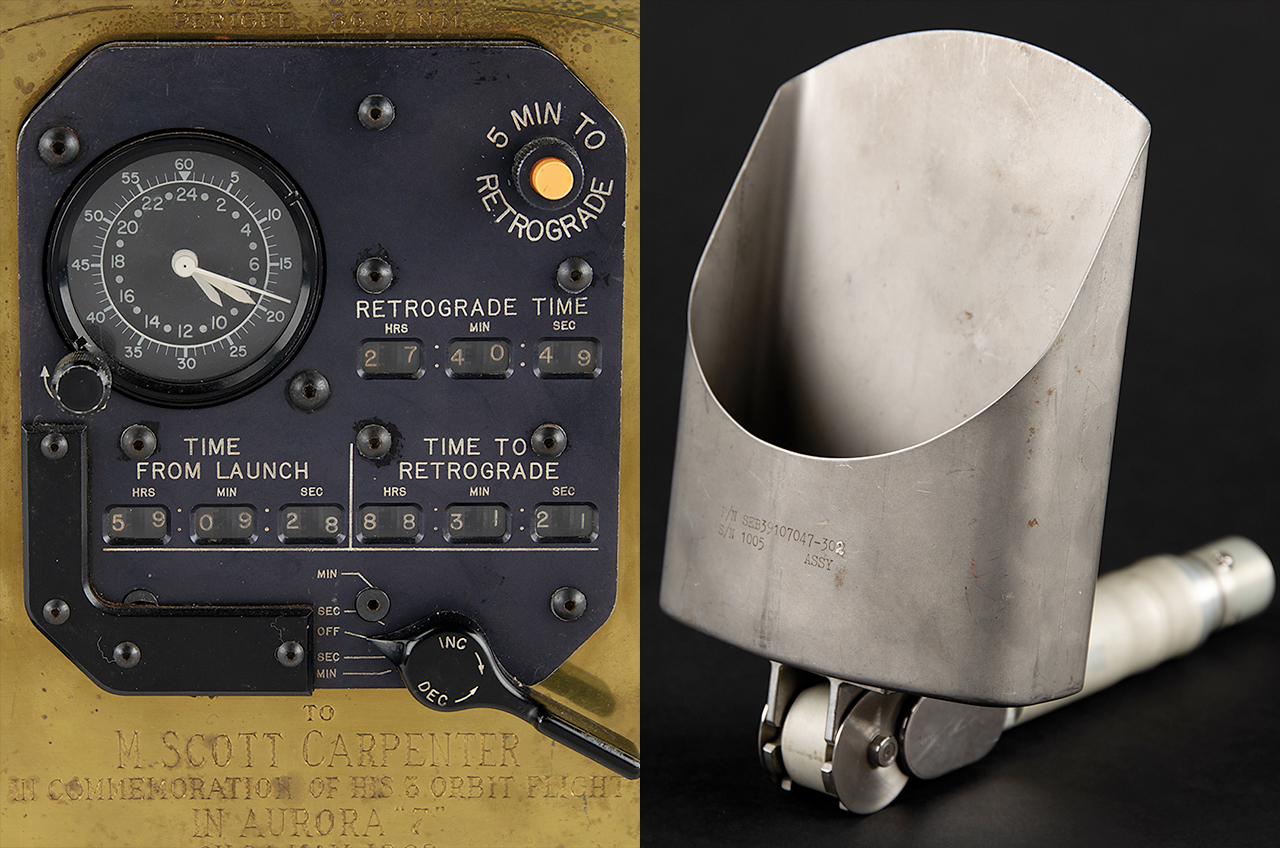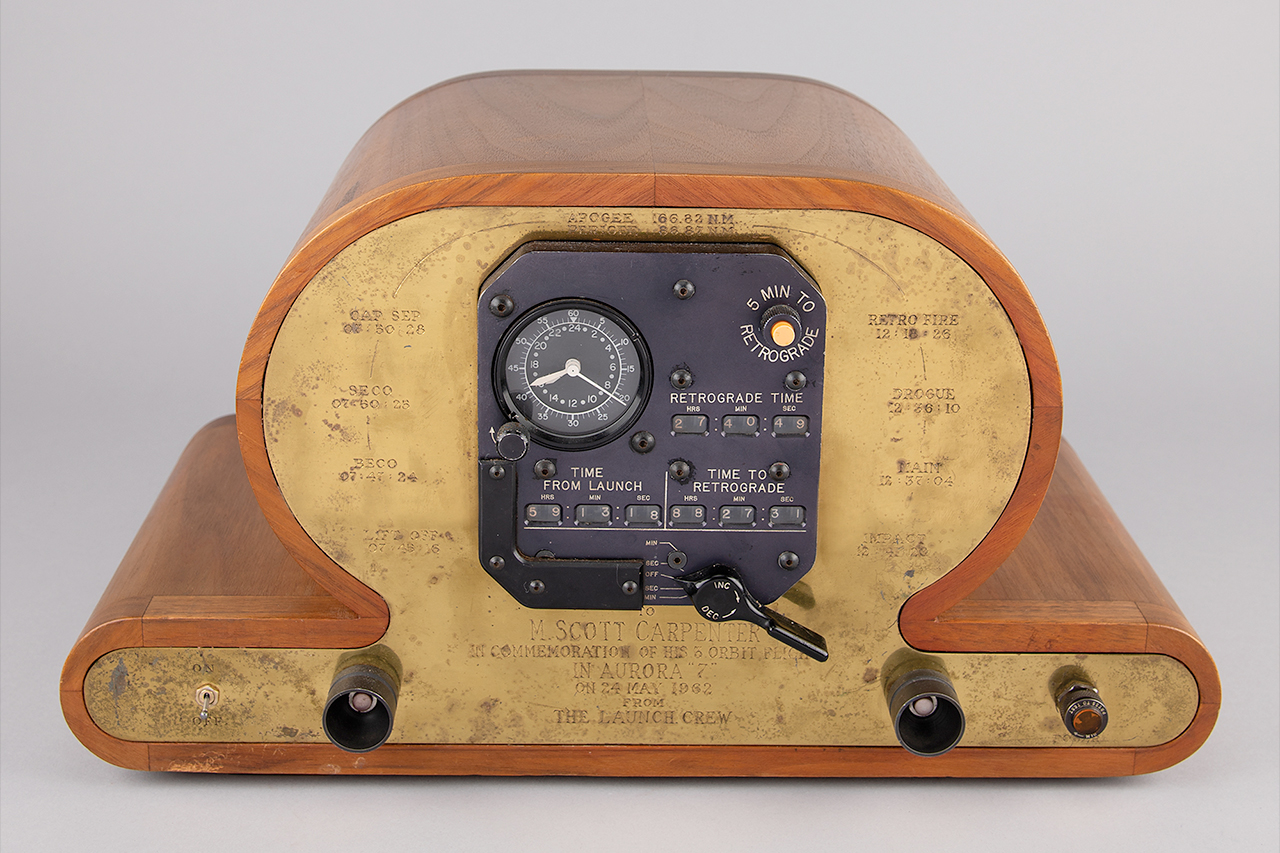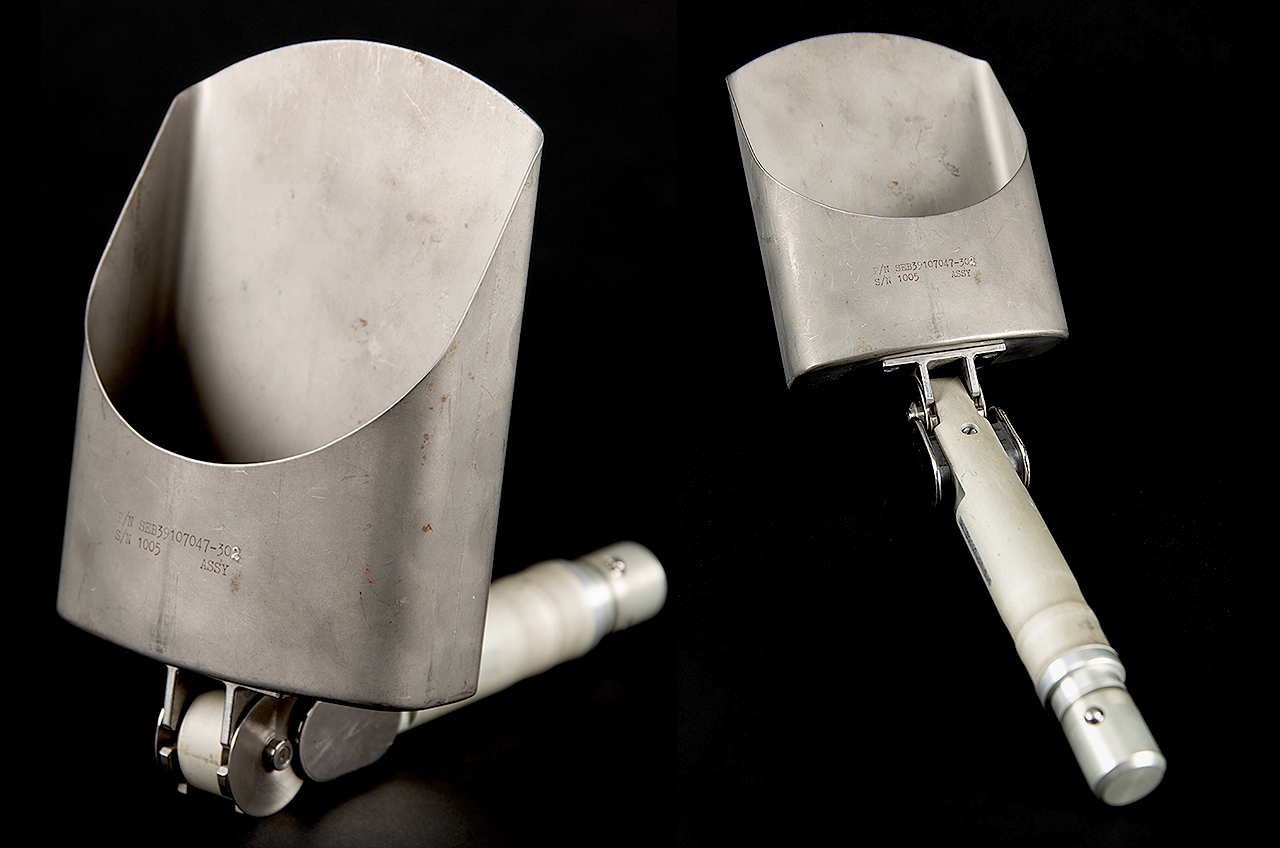Here's the (moon) scoop: Mercury 7-flown clock, Apollo lunar shovel up for auction
Bidding closes on Oct. 19, when the clock is estimated to sell for six figures.

The clock is ticking again on an auction of space exploration artifacts, though this time it is not just any timing device driving the bids.
The "satellite clock" that flew as part of the instrument panel aboard Aurora 7, NASA astronaut Scott Carpenter's Mercury spacecraft, is among the more than 400 lots now open for bidding as part of RR Auction's latest sale of space and aviation memorabilia. The online auction, which also features the soil scoop used by Apollo 16 astronaut Charlie Duke on the lunar surface, runs through Oct. 19.
"This clock was on the instrument panel of my spacecraft, Aurora 7, during my Earth orbital spaceflight on 24 May, 1962, which was the United States' second manned orbital flight. It was given to me by the MA-7 [Mercury-Atlas 7] launch crew," wrote Carpenter in a letter that accompanies the clock. Carpenter died in 2013; the clock was consigned for auction by his family.
Related: Aurora 7: Astronaut Scott Carpenter's Mercury flight in pictures

The clock, which is still operational, features five main components: a "time of day" clock with 24-hour and 60-minute/second dials; a telelight button for "5 Min to Retrograde;" three digital counters for "Retrograde Time," "Time from Launch" and "Time to Retrograde;" and a retrograde time reset handle. After its return to Earth, the mechanical device was mounted into a mantel-style display piece, which bears a gold-tone plate with an engraved inscription dedicating the artifact to Carpenter.
Carpenter referenced the clock throughout his nearly five-hour mission. In one such instance as he prepared to come to back Earth, Carpenter called down to Mission Control and made mention of one of the displays. "Five minutes to retrograde, light is on. I have a rate of descent, too, of about 10, 12 feet per second."
Surrounding the original artifact is a list of key times from the MA-7 flight, including liftoff, booster engine cutoff, sustainer engine cutoff, capsule separation, apogee, perigee, retro fire, drogue chute deploy, main parachute deploy and splashdown (labeled "Impact"). The front plate also contains four more buttons and switches, and a two-prong power cord extends out from the clock's paneled base, which can be opened to reveal the clock's inner workings.

Inside is a power supply schematic and handwritten notes by the craftsman who built the clock's presentation case and Guenter Wendt, who oversaw each of the Mercury astronauts as they climbed into their spacecraft for launch. Wendt, who died in 2010, wrote in jest, "Keep your #6I/#@ hands off!! Ye old PAD FUHRER."
RR Action estimates the clock will sell for more than $100,000. With seven days to go, the lot (no. 7001) has attracted 12 bids totaling just over $14,000.
Another highlight of the sale is the large adjustable scoop that was used by both Apollo 16 moonwalkers, lunar module pilot Charlie Duke and commander John Young, to help in the collection of 211 pounds (95.8 kilograms) of lunar material for its return to Earth. The scoop is one of only two such tools to be brought back from the moon. (The others were left on the lunar surface to save weight.)
"I had to pick up a rock that was probably the size of a watermelon, and I could not pick it up with one hand. So I put the shovel down and leaned towards it, and rolled this rock up my side with my right hand, and was able to roll it up my leg and cradle it like a little baby, and take it back to the lunar module," wrote Duke of using the scoop, or "shovel" as he described it, to collect what became known as "Big Muley," the largest specimen retrieved during the entire Apollo program.
Related: Lunar legacy: 45 Apollo moon mission photos

The 13.75-by-4.5-by-2-inch (35 by 11.4 by 5 centimeters) scoop is accompanied by a detailed letter of provenance signed by Charlie Duke, who attests to the tool's use on the lunar surface,
"From the moment Charlie Duke offered this scoop to us, I knew it was the most important lunar artifact we've ever offered," said Bobby Livingston, executive vice present at RR Auction, in a statement. "This shovel not only spent time on the lunar surface, it spent time three feet inside the lunar surface, which makes it an exceptional collectable."
RR estimates the Apollo 16-used lunar soil scoop (lot no. 7197) to sell for more than $750,000. As of Thursday (Oct. 12), 13 bids had pledged more than $80,000.
Other stand-out lots from the current sale include Dave Scott's complete Apollo 15 Data Book, which landed with him on the moon (lot no. 7175, est. $50,000+); Pete Conrad's Apollo 12 command module translational hand controller grip (lot no. 7116, est. $40,000) and a recovered aluminum brace from SpaceX's Starship, which crashed during its first flight in December 2020 (lot no. 7364, est. $5,000).
In addition to Mercury, Apollo and SpaceX artifacts, the sale also has artifacts and memorabilia from the Gemini program, Skylab and the space shuttle. A federal law passed in 2012 confirmed the rights of Apollo-era astronauts to retain items from their spacecraft.
Get the Space.com Newsletter
Breaking space news, the latest updates on rocket launches, skywatching events and more!
Click through to collectSPACE to watch Scott Carpenter's satellite clock in action and hear Charlie Duke describe his moon rock scoop.
Follow collectSPACE.com on Facebook and on Twitter at @collectSPACE. Copyright 2023 collectSPACE.com. All rights reserved.
Join our Space Forums to keep talking space on the latest missions, night sky and more! And if you have a news tip, correction or comment, let us know at: community@space.com.

Robert Pearlman is a space historian, journalist and the founder and editor of collectSPACE.com, a daily news publication and community devoted to space history with a particular focus on how and where space exploration intersects with pop culture. Pearlman is also a contributing writer for Space.com and co-author of "Space Stations: The Art, Science, and Reality of Working in Space” published by Smithsonian Books in 2018.In 2009, he was inducted into the U.S. Space Camp Hall of Fame in Huntsville, Alabama. In 2021, he was honored by the American Astronautical Society with the Ordway Award for Sustained Excellence in Spaceflight History. In 2023, the National Space Club Florida Committee recognized Pearlman with the Kolcum News and Communications Award for excellence in telling the space story along the Space Coast and throughout the world.










